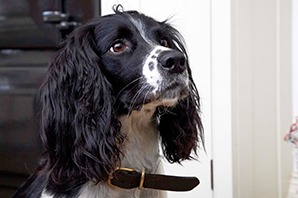Is there such a thing as a child-friendly dog?

Choosing a pet is a difficult process and when there are children involved, it is especially important you choose the right dog for you.
Petplan looks at whether certain dogs have a natural propensity to calmness and children or whether it's all in the rearing…
What qualities should you look for?
Introducing a dog to your home can be a huge change. So firstly, you should choose a dog that will easily fit in or adapt to your existing lifestyle.
Once the list of possible furry pets is shortened, there are a few qualities you should look for which suggest that they could be great around children, including:
- Energetic – children can be non-stop, 24 hours a day, so it’s important that your dog can keep up with them! Choose a younger dog whose energy levels will be naturally higher, or a breed known for their active nature, such as a Spaniel. Make sure you’re providing your dog with enough exercise as excess energy can result in behavioural problems.
- Sturdy – children, despite their size, don’t always have the most delicate hand. So avoid choosing a nervous, timid dog such as Miniature breeds. Dogs with a patient, calm temperament can also form stronger bonds with children.
- Friendly – this doesn’t really depend on breed, as most dogs’ personalities vary. Look for a warm, welcoming character with a wagging tail who you can see fitting in with your family.
- Intelligent – dogs that are easy to train are perfect for family life. Mostly for your child’s safety, a dog must be able to learn the rules of the household quickly and know boundaries that shouldn’t be crossed.
- Size – despite larger dogs having the capacity to knock children over, most large breeds tend to be docile whereas smaller dogs can sometimes be too excitable.
However, every choice is personal, and just because a dog has lower energy levels doesn’t necessarily mean they aren’t ‘child-friendly’.
Ask yourself what dog you’re looking for, for example, younger dogs are more sociable and will form bonds easier, however older dogs have the advantage of being trained but may take time to warm to the family.
Which breeds of dogs are ‘child-friendly’?
Although there is no such thing as a child-friendly breed, there are traits in the following dogs which suggest they have great potential:
- Cavalier King Charles Spaniel
- Cocker Spaniel
- Beagle
- Bernese Mountain Dog
- Labrador or Golden Retriever
- Newfoundland
- Collie
- Staffordshire Bull Terrier
Choosing a good breeder also contributes to a dog’s friendliness. For instance, breeders who test for hereditary problems, train and socialise puppies in a homely atmosphere, and breed only from dogs with a calm demeanour, will provide you with all the right beginnings to raise a child-friendly dog.
So, is there such a thing as a child-friendly dog?
Whilst some dog breeds have certain qualities which might make them great as a family pet, each individual dog is different. Just because a certain breed inherits qualities such as a calm temperament does not automatically mean they are a ‘child-friendly dog’. Similarly, dogs that have been falsely brandished as aggressive, could prove to be the perfect addition to your family.
Introducing children to a new dog
Introducing your dog to children for the first time requires supervision and careful handling to set the scene for future interactions. Even if the dog is used to children, he or she may not be used to yours and will need some time to get to know them.
You can help your dog feeling overwhelmed by insisting the dog approach the children rather than the other way round.
Dogs don't always appreciate being cuddled unless familiar with it from an early age. It is a great temptation for children to do this, especially if they have been used to doing it to a previous dog. You should slowly find out what your new dog is comfortable with, supervising constantly to ensure no unacceptable behaviour occurs on either side.
Any well-trained and socialised dog will make a great pet, and Petplan makes training your dog easy. No breed is fully ‘safe’, so always be sure to supervise when your dog is around children.
What has been your experience of raising dogs and children together? Share your stories and tips below…

